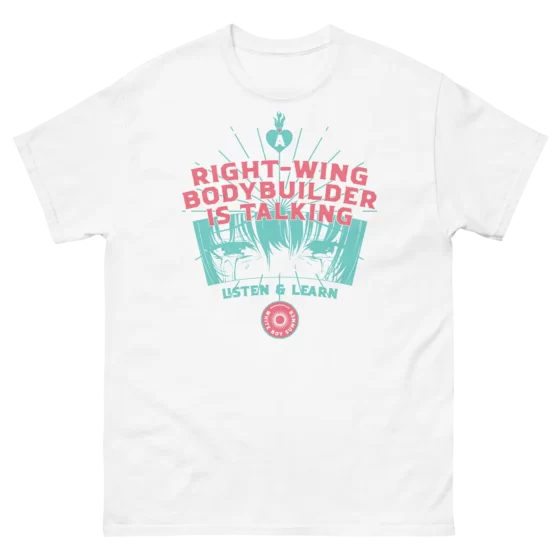Beyond the Wall
The agricultural revolution and its consequences have been a disaster for the human race. They have greatly increased the life expectancy of those of us who lived in “advanced” countries, but they have destabilised society, have made life unfulfilling, have subjected human beings to indignities, have led to widespread psychological suffering and have inflicted severe damage on the natural world. The continued development of agriculture will worsen the situation. It will certainly subject human beings to greater indignities and inflict greater damage on the natural world, it will probably lead to greater social disruption and psychological suffering, and it may lead to increased physical suffering even in “advanced countries”.
You may recognise the previous paragraph, with one crucial substitution, as the opening paragraph from Industrial Society and Its Future, otherwise known as the Unabomber Manifesto. This is not me being facetious or “clever”. Far from it. Truth is, every word that Ted Kaczynski says in those immortal opening lines is just as applicable to the agricultural revolution, an event which began around 12,000 years ago and whose consequences continue to ramify to this day, as it is to the industrial revolution, a much more recent, but no less momentous, change to the way we, as humans, live. Indeed, without the one there could never have been the other. If mankind had not domesticated grains and livestock and settled down to a life of sedentary cultivation; if man had instead continued the fully or semi-mobile life of a Stone Age hunter-gatherer, there could never have been an industrial revolution – just as there could never have been cities, states, universities, standing armies or any of the other paraphernalia of what we like to call civilised life.
As with the industrial revolution, the agricultural revolution also has – and has had from the very beginning – its opponents and enemies. In the earliest days there were Luddites of the agricultural revolution too, and they resisted not by smashing looms, but simply by running away, by doing everything they could to avoid being caught by the first states and put to work in the fields, willingly or otherwise. The machines these OG luddites raged against were the new states, of which they themselves formed the vital moving parts. As the anthropologist James C. Scott puts it, the very first states were “population machines” whose job was to maintain a constant supply of people to work the land and extract a surplus of grain for tax. Besides the drudgery of the new agricultural lifestyle, which was geared entirely around the needs of just a single or sometimes two grain-crops, serious malnutrition caused by a largely grain-based diet and new forms of epidemic disease – the result of unprecedented concentrations of people and livestock – made life nasty, brutish and short for the first agriculturalists. Forced migration, often as a result of environmental changes and population pressure, and war, meaning slavery, were the principal means of ensuring the flow of people into the state’s population machine would continue. The first wars between states were not bloodbaths, in which the enemy would be slaughtered to a man, but opportunities to capture productive workers, as well as livestock and other booty. It’s for this reason that the most ancient accounts of war tend to be lists, but not necessarily of men killed – this many slaves taken, so many women and children, cattle, sheep and pigs.
Of course, this is not a story we’re used to hearing. Since we are the heirs of the agricultural revolution and continue to live in agricultural societies, it’s only natural that the story we tell about that event should be a positive one. Societies tell stories that justify their institutions and history, whatever they may be, and we are products of the very first agricultural revolution as much as the first farmers of Mesopotamia. No healthy society willingly portrays itself as being on the wrong side of history (which is why the new origin stories Americans are being told, like the 1619 Project, are so revealing). Such stories are often true, at least to some extent. Ideologies have to be, for people to believe them, certainly in the long run. It would be ridiculous – what philosophers call a “performative contradictive” – for me, as a 21st century inhabitant of a first-world country, standing at his expensive Alienware gaming PC (with an RTX 3080!) on a Saturday afternoon in early spring, a few metres from a blissfully warm radiator, to pretend that the long march of agriculture is actually just a trail of tears. Clearly, it has its benefits, just like the industrial revolution. Even so, we should reckon with the downsides, first of all because they are true. What we then choose to do with such a reckoning, is our choice.
For example, in the face of evidence of our maladaptation to certain foods that have become staples of civilised diets since the agricultural revolution, especially gluten-bearing grains like wheat, more and more people are turning to so-called “paleolithic” diets. These diets are supposed to mimic more closely the foods our ancestors ate before the agricultural revolution and, therefore, to be healthier for us, since we were hunter-gatherers for a far longer period of time than we’ve been settled cultivators. It makes sense, as a principle; although I agree with Stone Age Herbalist, in his piece in Issue One of MAN’S WORLD, that the range of foods our neolithic ancestors ate was far greater than most paleo dieters allow, and could vary quite substantially from place to place.
But a reckoning with the true costs of agriculture need not only have lifestyle implications. What about politics? It shouldn’t be too difficult to see how an attack on our agricultural system could easily become an attack on the political system itself. After all, the kind of political forms we take for granted, namely states, are a direct product of the agricultural revolution and could scarcely be imagined without it. Although some academics have tried to suggest that states can actually take various forms – for instance that nomadic pastoralists in Inner Asia lived in “headless states”, which had all the functions of a state but no central ruler – it’s clear that those organisations don’t bear much relation to the states we know and love. If you got rid of grain agriculture, could states survive? Probably not.
If we care about freedom today, we need to think carefully about the relationship between control of the food supply and social control. The Great Reset, the latest iteration of the globalists’ plan for world government, has at its centre a new agricultural revolution. According to the architects of the Great Reset plan, such as the World Economic Forum, the world must revolutionise the way it produces and consumes food if it wishes i) to avert the looming catastrophe of man-made climate change, and ii) to be able to feed, in a “fair and equitable manner”, a global population that is projected to reach 10 billion by 2050. We will have to abandon our consumption of meat and dairy products entirely, the globalists say, and instead switch to plant-based diets supplemented with novel sources of protein such as insect-meal, and plant-based and lab-grown “meat”. Be in no doubt: this revolution will be the basis of a new form of global social control unlike anything that has come before it. First, because the distribution of food is likely to be tied to a personal credit score, maintained through digital biometric forms of identification, and personal carbon allowances, by means of which each individual will offset their environmental impact across every aspect of their life. And second, because it will bring about the total corporate capture of the world’s food supply. To meet the need for massively increased yields of grain-crops, new varieties of GMO seeds will be required, which will of course be patented and therefore owned by just a handful of corporations like Bayer, Monsanto and Syngenta. Likewise the new varieties of ersatz protein: patented and owned. It will be near-impossible to produce food, certainly on a large scale, without the say-so of a corporation. The parallels between the Great Reset and its new agricultural revolution on the one hand, and the original neolithic revolution on the other, are one of the main subjects of my new book, The Eggs Benedict Option, which I’m currently writing.
Here, in the rest of this essay, I simply want to talk a little about how certain groups chose not to become settled agriculturalists, but instead went “against the grain”, to borrow the title of James C. Scott’s important book. As Scott sees it, the period from the emergence of the first agricultural states in the Near East until at least 1600 AD – a period of perhaps five or more millennia – was the “golden age of barbarians”. It was a golden age, Scott argues, because the majority of people on the planet were still non-state peoples (so “barbarians”) and were able to remain beyond the reaches of state power. What’s more, if these barbarians were clever, they were also able to live off the prosperity of the neighbouring grain states, whether through serving as mercenaries (usually horsemen) in their armies, trading with them at outposts or simply through raids and pillaging. In addition to having access to commodities that settled peoples wanted to trade for, such as furs, slaves, livestock and horses, the barbarians enjoyed the twin advantages of mobility and surprise as predators of settled farmers; as the well-known Berber proverb has it, “raiding is our agriculture”. For these reasons, barbarians could live in rude style beyond the boundaries of the civilised world. The average barbarian was better-fed, taller and lived an easier life than his agricultural counterpart. These contrasts came to the fore most powerfully when barbarians and agriculturalists found themselves at war with one another, as was not uncommon. Here’s a quotation from Jack Weatherford’s book on Genghis Khan that I’ve probably used one too many times already – oh well!
“Compared to the Jurched [northern Chinese] soldiers, the Mongols were much healthier and stronger. The Mongols consumed a steady diet of meat, milk, yogurt, and other dairy products, and they fought men who lived on gruel made from various grains. The grain diet of the peasant warriors stunted their bones, rotted their teeth, and left them weak and prone to disease.”
It was no surprise, then, that there was a steady drain of people from the agricultural states into barbarian territory. Even before the existence of states, it was very common for sedentary sites to be abandoned and for the people to move on and settle somewhere else, but the added pressures of population, coercion and competition made the early states unstable to a much greater extent. Collapse could happen at any time, whether through the ravages of epidemic disease, revolt among the peasants, ecological changes leading to reduced agricultural productivity, or war with other states. When an early state began to unravel, populations that were previously forced to be settled agriculturalists could now choose not to be – and the evidence suggests that many were more than happy to vote with their feet as soon as the opportunity arose. And so what look to the historian and the archaeologist of today like little “dark ages”, when written and physical records cease as a result of state collapse, may actually have been anything but dark ages for the peasants who were now free from the crushing exactions of state authority.
“There may well be, then, a great deal to be said on behalf of classical dark ages in terms of human well-being. Much of the dispersion that characterizes them is likely to be a flight from war, taxes, epidemics, crop failures, and conscription. As such, it may stanch the worst losses that arise from concentrated sedentism under state rule.”
Scott calls the deliberate choice to go over to the barbarians, “voluntary self-nomadization”. Herodotus, for instance, describes how certain Greeks might spend part of the year in the saddle among the famous Scythian pastoralists, and self-nomadization was an option as much for the heavily pressed Roman cultivator in the late Empire, who might choose to join the Huns or the Germans, as it was for the Chinese rice farmer if he could reach the nomadic horsemen of the Great Steppe. One fact that’s worth remembering about the ancient world is that walls, and that includes the Great Wall, weren’t just built to keep people out: they were also built to keep people in.
One problem for the barbarians was that in the long term, especially through providing slaves and serving as mercenaries, they helped to strengthen and expand the grain states. “The barbarians willingly dug their own grave,” Scott says. By 1600, that grave had almost completely been dug. In the late eighteenth century, Edward Gibbon, author of The History of the Decline and Fall of the Roman Empire, wondered whether there were any barbarians left in Europe at all. Except in a few mountainous and inhospitable places like the Scottish Highlands and Macedonia, they were all gone.
Beyond Europe, though, there were still frontiers, and as long as there were still frontiers, the possibility of abandoning settled life for the life of a barbarian remained. One of the final hurrahs of the self-barbarising men took place in the American wilderness between the 1810s and 1880s, with a group who have come to be known as the mountain men.
Made famous in recent years by the film The Revenant, starring Leonardo Dicaprio, the mountain men travelled west into the Rocky Mountain territories in search mainly of fur to sell back east. After the Lewis and Clark expedition between 1803 and 1806, which travelled through the Rockies into the Oregon Country, large numbers of men – perhaps as many as 3,000 during the peak of the fur trade in the 1840s – threw off the garments of settled civilisation and, for all intents and purposes, became indistinguishable from the many native tribes that still roamed the great western territories. Apart from the colour of his skin, which in any case would have been superficially darkened by the sun and by weeks or months of accumulated sweat and grime, the mountain man in his buckskins was changed down to the level of his mannerisms. Like the native he would place distinct emphasis on his words, gesticulate frequently and show extensive skill in the use of sign language. It was common for mountain men to marry Indian squaws and take them off into the wilderness with them.
But perhaps the way in which the mountain men most came to resemble the natives, and to differ most from their fellow civilised countrymen, was in their diet. This was the subject of a fascinating article by William Holston, “The Diet of the Mountain Men”, in the California Historical Society Quarterly, published in 1963. Like the native, the mountain man lived off the land, eating almost entirely meat, especially bison, but also elk, deer, bear, antelope, beaver and other small game. Cougar and lynx meat, though harder to find, were highly prized.
The primary food, bison, was treated in the same manner as the Indians, being butchered with hatchets or tomahawks. No part went to waste – tongue, brains, blood, organs, including the intestines, and fat were savoured. If a pregnant cow was slaughtered, even parts of the unborn foetus – usually the legs – would be consumed too. If the mountain men had plenty of time to spare, they would make jerky, dried strips of meat prepared on wooden frames, and pemmican, pounded jerky made into cakes with melted fat and sometimes berries. The pounded jerky would be poured into buffalo-hide bags and then the melted fat poured in on top, making for an excellent travel food that kept well for long periods of time.
If, however, time was short or the mountain men were simply too hungry, they would fall upon the dead animals with the ferocity of wolves, forgoing even the most basic rudiment of civilisation – cooking. Holston describes the scene:
“Immediately, the bison’s skull was hacked open, and the raw brains were wolfed down in great, bloody chunks. The blood was quaffed and usually spilled down the trapper’s face, arms, and body. The liver was torn from the body cavity. Bloody and unwashed, it was seasoned with gunpowder, or by squeezing the gall bladder’s contents over it, and then consumed without further preparation.”
Even when the mountain men did cook their meat, their preference was almost always rare. Alternate pieces of fat and meat would be stuffed onto a skewer and held briefly over the fire or stuck into the ground next to it. Buffalo marrow was made into a soup with the blood, and fat was flash-boiled if it wasn’t eaten raw.
Perhaps their favourite delicacy of all was the “boudins”, or intestines, which were cut into shorter lengths and roasted, with their contents, over the fire. So prized were these boudins that they were swallowed whole, without chewing. This might lead to absurd spectacles such as when two mountain men decided to have an eating contest with a single length of intestine. Just when one of the men looked to have swallowed a large section, the other would
“jerk back his head, drawing out at the same moment, by the retreating motion, several yards of boudin from his neighbor’s stomach… and, snapping up the ravished portions, greedily swallowed them, to be in turn again withdrawn and subjected to a similar process by the other.”
When the going was good, mountain man and Indian alike would gorge on meat, giving little thought to the days and weeks ahead. This, quite naturally, led to situations of extreme hunger when they might be reduced to eating insects, buds and twigs. In truly dire straits, it was not unknown for mountain men to eat their own buckskins and leather bags, or the grease from their guns. One mountain man confessed,
“I have held my hands in an ant hill until they were covered with the ants, then greedily licked them off. I have taken the soles off my moccasins, crisped them in the fire, and eaten them.”
Nor were the mountain men above cannibalism, when it came to it. Bill Williams was one mountain man accused of eating his companions due to starvation. Charles Gardner, aka “Old Phil”, was said to have eaten human flesh on multiple occasions, including his young Indian wife.
When the mountain men returned, briefly, to the outposts of civilisation to trade, an orgy of feasting, drinking and fighting was always guaranteed, and whatever precious winnings these hard, hard men had made were cast away without even a moment’s thought for the future. Here is how Holston describes such meetings:
“All the months of starvation and gorging ended for the mountain men when they met for their annual rendezvous. This was a noisy, drunken gathering. Fights were frequent and there was ‘a constant uproar from the hoards of Indian dogs brought along for the final grand feast.’ Indians, trappers, and traders drank diluted raw alcohol. Metheglin, a drink made from diluted raw alcohol and honey, was a favorite. Whiskey sold for five dollars a pint at the 1832 rendezvous. It was the only item which was sold for several days.”
This description instantly evokes Cormac McCarthy’s novel Blood Meridian and the bacchanalian feasting of the Glanton Gang after their state-licensed murder spree through the southern Badlands; or Tacitus’s descriptions of the very bravest warriors among the Chatti, whom I mentioned in my previous essay, in Issue Five. “They have no home, farmlands or other burdens. They nourish themselves at the table of whoever they find, wastefully accepting what is offered and showing contempt for anything that is supposedly their own, until pale old age makes them unequal to such harsh virtue.”
In the case of the mountain men, the window of opportunity to exercise such harsh virtue, if it could be called that, was short. By the 1840s, the American fur trade had collapsed, largely due to changing fashions in Europe – the principal market for beaver fur – over-trapping and competition from Canadian companies like the Hudson Bay Company. Trappers roamed the western wilds in fewer and fewer numbers. Their knowledge of the trails meant that they were still in demand, however. As an increasing flow of migration from the east made its way across the Rockies, including via the newly opened Oregon Trail from 1841, the former mountain men were needed as guides and scouts. Although a few trappers were still plying their trade in the old manner as late as the 1880s, by 1890, when the American frontier was finally declared closed, with momentous consequences for America as a nation, the mountain man’s way of life was truly a thing of the past.
Or not entirely. Interest in low-carbohydrate diets has only grown over the last fifty years or so, and the diet of the mountain men has been cited as powerful evidence in their favour. At the end of his article, Holston notes that “the recorded, excellent health of the average mountain man has helped to disprove certain dietary theories”, chiefly the notion that men could not “subsist on an all-meat diet and remain in good health.” Instead, the diet of the mountain men shows that “a predominantly raw, fresh meat bill of fare, supplemented with liberal quantities of fat, is one of the most healthful regimes that an individual can eat.” This is further confirmed, Holston adds, by the research of Vilhjamur Stefansson, who spent extensive periods of time with the Inuit. It has been a contention of mine that Vince Gironda, a pioneer of low-carbohydrate diets in bodybuilding, could very well have read Holston’s article. Gironda was known to read widely in the scientific and broader nutritional literature of his time, and we know for certain that he had read the work of Vilhjamur Stefansson.
Today, the wisdom of Vince Gironda has become a central part of a new revolt against the grain, and especially against the globalist Great Reset plan, which would complete the dietary revolution begun in Mesopotamia some 12,000 years ago. Such a revolt comes, however, from the heart of the grain states, since they now control all the meaningful territory. But who says that this control will not one day soon begin to recede? And then, perhaps, a new class of barbarians can emerge and serve as both a beacon, and a hope, for all those who wish to leave themselves and this trash-world behind.
































